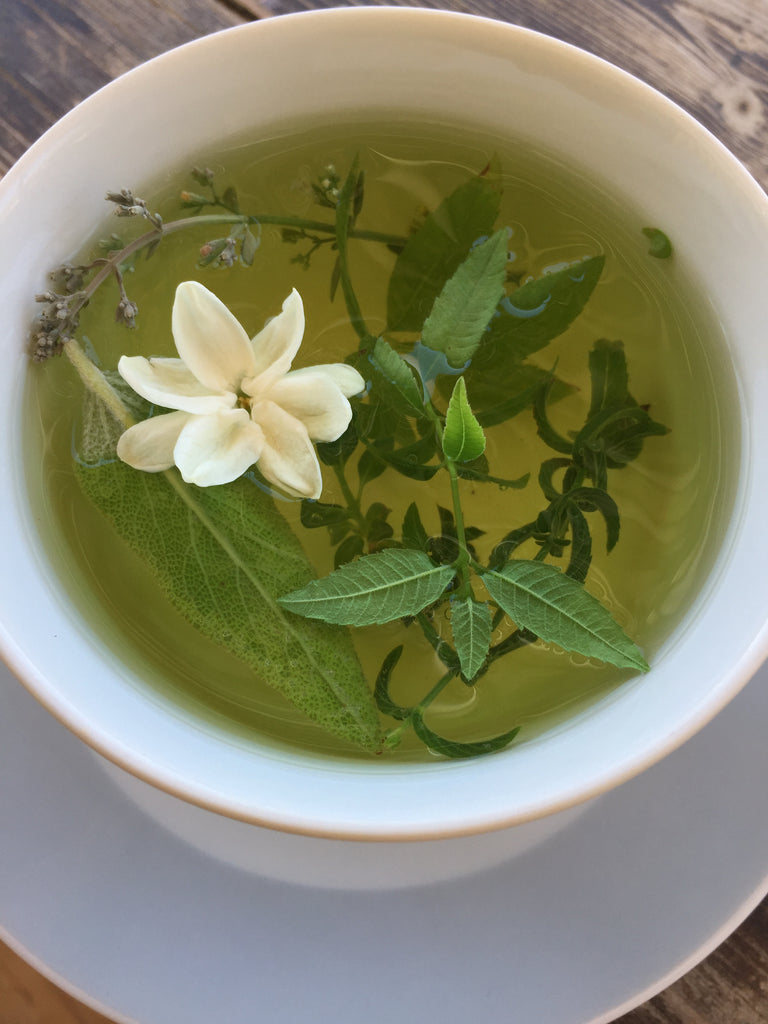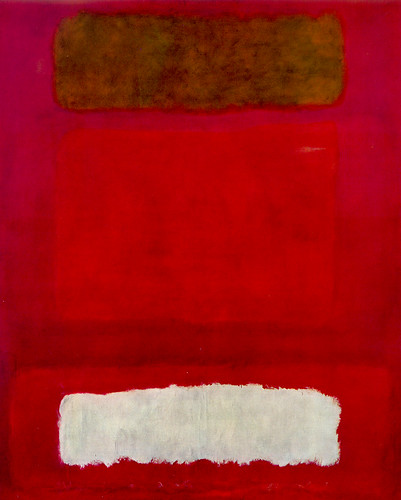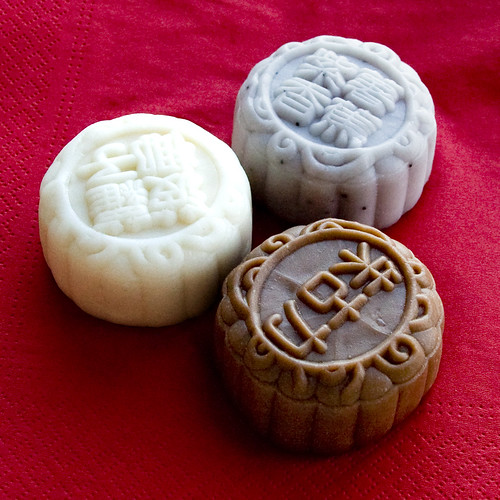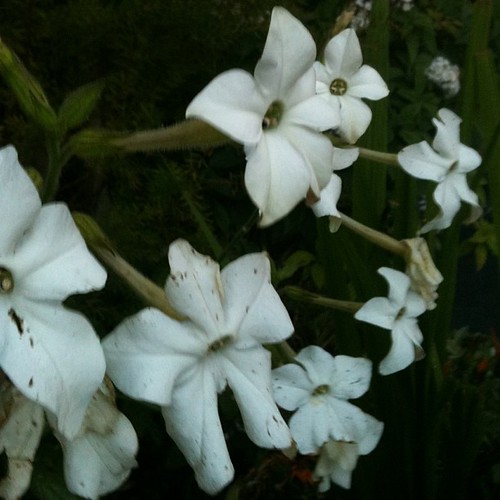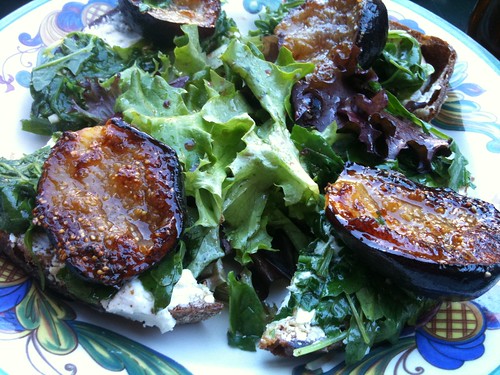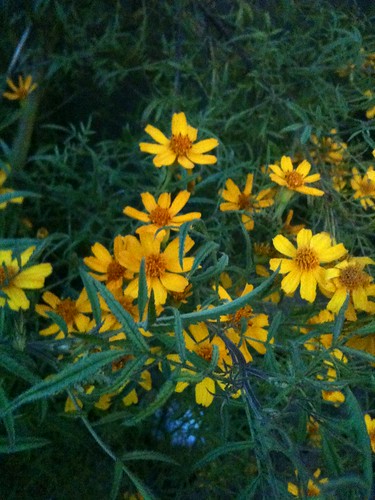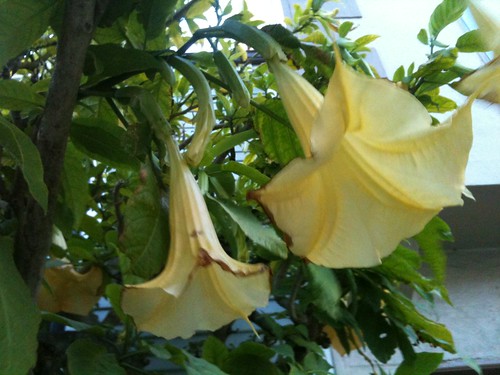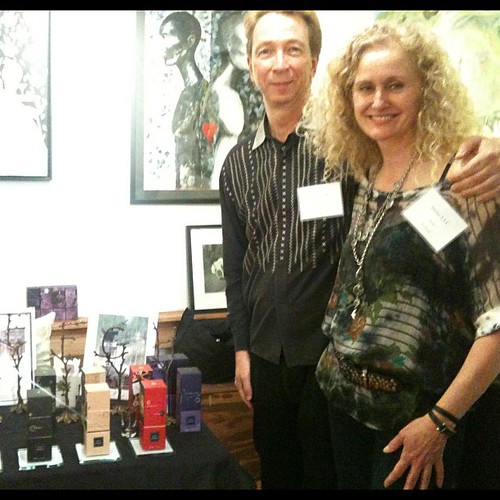Calyx
Calyx (1986), the one and only, was referred to several times on Smellyblog, but never received its own spotlight. It was the fact that it has tagetes that renewed my interest in it, even though it has been in my possession for over two years. I was gifted a vintage bottle (from the days when it still belonged to Prescriptives) in winter 2020. The circumstances where unusual: I was invited by Daphna Margolin to sniff her osmanthus bushes, a smell she's obsessed with and is fortunate to grow in her garden in the humid coastal belt, despite all expert opinion on where osmanthus could and should grow; and to experience her womb sculpture, which she assured me would be a safe sensory haven for my daughter.
Daphna is an Eco-Tech artist whose work explores the intersection between ecology, technology, science and art. Many of her pieces are interactive and question our sensory world, and the way we perceive and process sensory information. Wonderfully, she is also a perfume connoisseur, and has a huge collection that fills an entire room. It was so special to meet a kindred spirit, enjoy her vegan persimmon mousse in the middle of a cold spell of winter that even affected the usually mild-weathered central Israel, and share our passion for fragrance, art and out-of-the-box sensory processing. She made my daughter feel welcome and comfortable, and gifted her with one of her Calyx bottles, which we both agree smells a lot like fresh osmanthus flowers.
Since then, Calyx holds a special place in my heart, as a memory of that special evening visiting Daphna. Admittedly, I don't ever wear it, but simply remove the cap and smell the bottle every once in a while. It has such a distinctive scent!
Calyx was in some ways a pioneer, and inspired so many other fruity-florals, including countless ancillary products with fruity-floral fragrances, the most recognizable of all being Herbal Essence. So it is hard now to think of Calyx out of this context, and taking it seriously takes some thinking out of the (shampoo) bottle.
To be fair, it is not exactly the first of its genre, it was preceded by almost a decade by Anaïs Anaïs (1978), with which it shares many points. But like everything that comes out of Sophia Grojsman's hands, no matter how fresh it may be - it always oozes warmth and coziness, as if it's a well-wrapped hug, sealed with a hot matriarchal kiss.
Grojsman's work is an example for how a perfumer's personality comes through their creations, and how when a perfumer - no matter how large is the corporation they belong to - remains authentic and true to themselves, their perfume can also be popular at the same time. I love the story behind this fragrance, which is a visit to Israel, the scent of grapefruit blossoms and that explains a lot about both the sheer cheer that this scent exudes, as well as its connection to this culture. Fragrances that are fresh yet strong are a very characteristic of what you'll smell around here on people and in their homes.
Calyx opens with that distinctive fruity and burst of freshness. It is very juicy but isn't any particular citrus; it's comes across as very sweet, but it is not cloying in any way. When a perfume with everyday references (such as gourmand or fruity notes) is done right, it gives suggestions and hints, and is not an obvious fruity. This is a long lost art, in a world filled with new perfumes of very loud and obvious fruit statements. Smelling Calyx reminds us how a fruity perfume can be both sophisticated and fun.
While many of Grojsman's fragrances are monolithic (AKA linear), Calyx goes through a few phases throughout its skin performance. It starts very fruity, which is my favourite part (and perhaps why I like to just sniff the bottle over and over again). It continues to be more of a floral-green, alluding to its literal meaning, which is the part of the flower anatomy that holds the petals in place (at least for some time).
So just like a flower that is bright and showy and fragrant, Calyx begins very colourful and fruity and juicy, intriguing and sensual. There is a long list of fruity players in this harmony (passionfruit, mango, guava, melon raspberry and perhaps even papaya). However, I'm not really picking out any of them. There is a feeling of the idea of a fruit but its identity is vague. And of course it is an olfactory illusion created by pairing some unusual notes together - grapefruit, tagetes (marigold), rose and spearmint of all things.
The fruity phase, which is adorable and uplifting, fades out in a blink of an eye, and feeling is that you've drank its nectar too fast and greedily plucked all the petals within minutes. What remains in one's hand is a shiny green goblet of greenery, with a nice long stem as a handle, and this is the phase that lingers the longest. Green floral, with the minty notes coming to the forefront, creating a feeling of a dewy garden on an early summer day. Walking on the moist grass barefoot, and greeting the flowers and herbs. There is a pretty lily of the valley that is quite dominant, the other flowers (rose and jasmine) are more subdued, acting only as harmonizers. I am renown for having a difficult relationship with pretty florals dominated with lily of the valley and greens - part of me craves the loveliness and prettiness, and another part of me feels undeserving; Then it all gets to my head and becomes too sharp and screechy to bear, as if doused with too much euphoria. Calyx somehow stays balanced with a warmth whose source is invisible and inexplicable.
Calyx lingers on my skin for hours, and the dry down has some continuity of the middle phase, maintaining the green for a long time, before it mostly boils down to oakmoss, cedar and musk.

Top notes: Grapefruit, Mandarin, Bergamot, Passionfruit, Guava, Mango, Papaya, Spearmint
Heart notes: Lily of the Valley, Tagetes, Rose, Jasmine, Melon, Neroli
Base notes: Cyclamne, Raspberry, Oakmoss, Cedar, Musk


